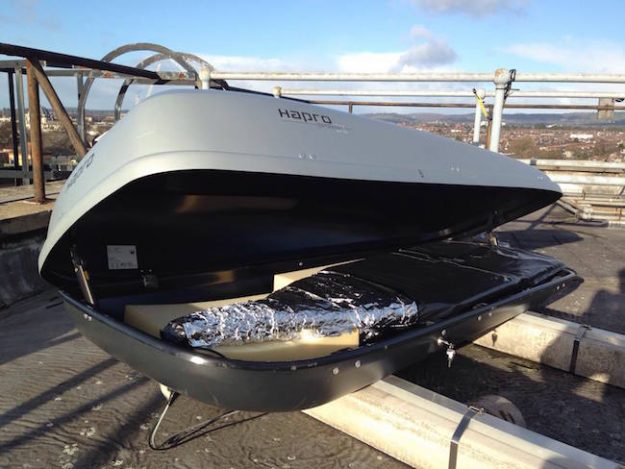Cosmic ray detectors in underprivileged schools aims to inspire a new generation of physicists

School children in underprivileged parts of Cardiff are using cosmic ray detectors in the classroom, thanks to an innovative science outreach programme.
The £93,000 programme, QuarkNet Cymru, is funded by the Welsh Government’s National Science Academy and enables secondary schools and academic institutions to join forces and form a network to measure cosmic rays. They offer students the opportunity to participate in real research, with the purpose of finding out more about these mysterious cosmic particles.
Cosmic rays travel from deep space at nearly the speed of light and are thought to originate from supernovae explosions and stellar collisions.

Dr Paul Roche, who worked on the QuarkNet Cymru programme, believes that it is a unique opportunity for students to be able to measure particles that are ultimately generated around a black hole.
He said, “We haven’t got enough physics teachers or enough scientists. We need to home grow more physicists and get people who want to go on to do this as a career. We thought this was a nice way of getting kids hands-on with an element of research.”
Eric Coombes, Head of Science at Whitchurch High School, said, “It’s equipment we can’t afford in schools and they [pupils] took ownership of it, taking data from equipment they would never normally have access to. The response was awe and wonder – ‘they’re going to let us use this equipment?’ To collect real live data they particularly enjoyed and they thought that it was inspirational.”
There is also research-grade equipment based at Cardiff and Swansea University with the network’s first detector installed on the roof of Cardiff University’s School of Physics and Astronomy. A second detector is currently under construction at Swansea University, with plans for a third at the proposed Oriel Science exhibition centre in the Swansea city centre.

By detecting cosmic rays, scientists hope to learn more about some of astronomy’s biggest questions, such as the origin of the Universe, the death of stars, and how galaxies and black holes form. On Earth, observations of cosmic rays have also been used to “look inside” volcanoes, help discover a large, hidden chamber in the Great Pyramid at Giza, and even map climate systems.
